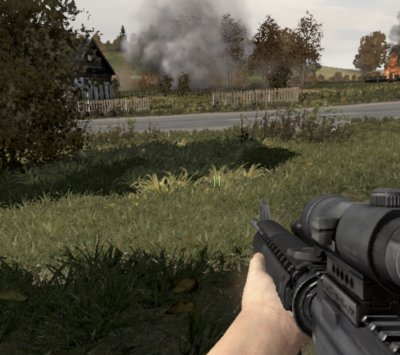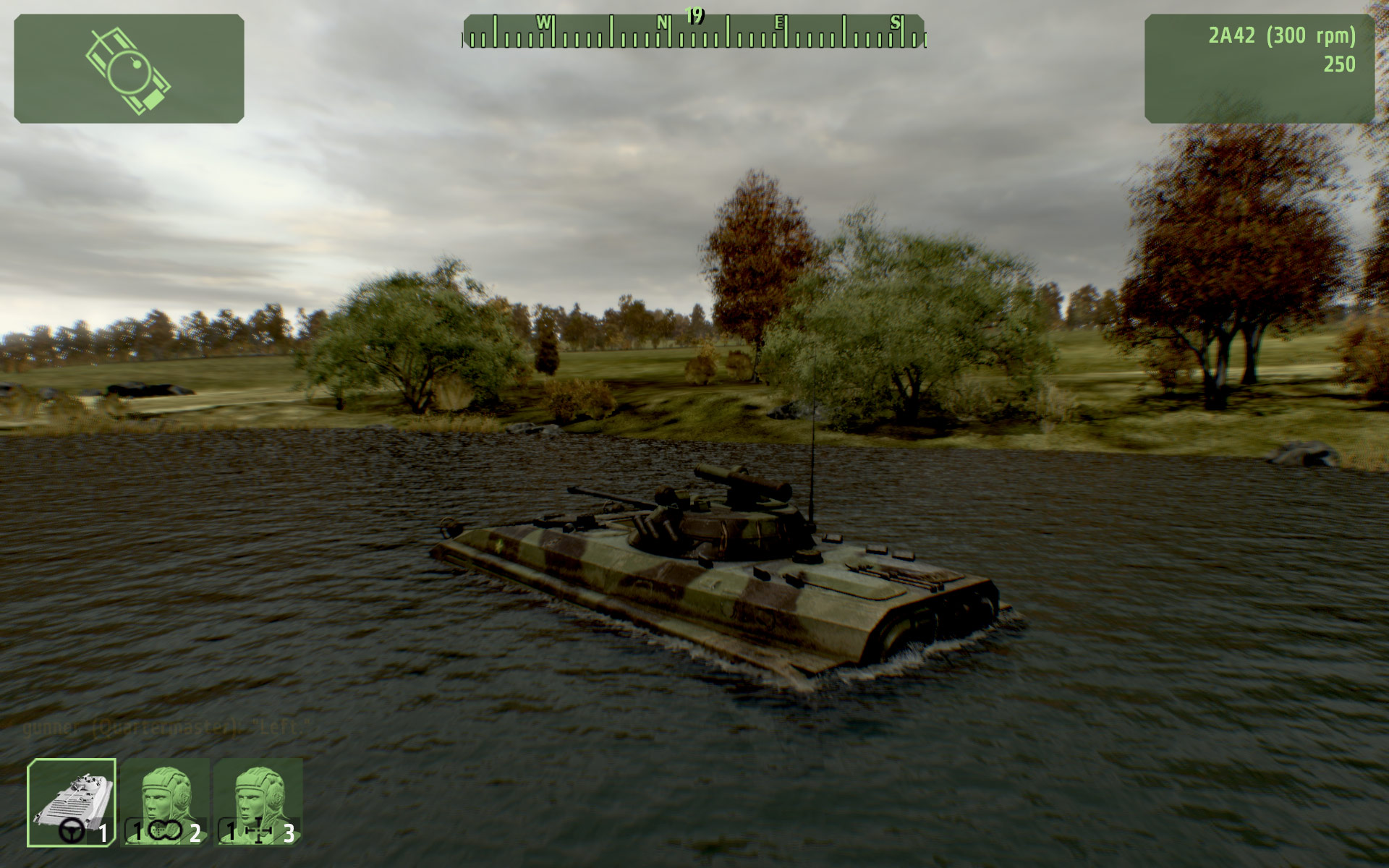Arma 2 Crack No Fade
About This Game. Join the scores of desperate survivors in the free 'Arma 2: DayZ Mod', the award-winning and massively popular persistent multi-player mod created by Dean 'Rocket' Hall for 'Arma 2: Combined Operations'! Go Solo, team up with friends or take on the world as you choose your path in this brutal and chilling landscape using. Copy the JAR file. The Jar file has an icon with a coffee cup on it. The filename is the latest Minecraft version number. Right-click the Jar file and click Copy. If your mouse or trackpad doesn't have right and left buttons, use two fingers to tap on the trackpad (or press the trackpad's button), or press the right side of the button, to simulate a right-click. ArmA II Free is a first person war simulator going far away from the rest of similar games. It isn't a traditional shooter. The goal of the game is not to make you feel as a super soldier or an army of one soldier, in fact the goal is to make you feel as one more soldier in the army. The group is important and you'll feel in it. The Abluescarab Designs CD-Key Generator will help you generate random CD keys for use in your shareware products. You can choose letters, numbers, or both. You can also pick whether or not to use lowercase letters. A little tool to play with Windows security. FADE will introduce many issues in the game, rendering it unplayable, giving the impression that the game is simply 'buggy'. For example, in ARMA 2, FADE will begin by gradually decreasing the accuracy of the player's weapons, making it very difficult to hit a target. FADE might reverse the left/right controls of vehicles, or make them randomly.
ARIMA models for time series forecasting
Notes on nonseasonal ARIMA models (pdf file)
Arma 3 Download Free
Slides on seasonal and nonseasonal ARIMA models (pdf file)
Introduction to ARIMA: nonseasonal models
Identifying the order of differencing in an ARIMA model
Identifying the numbers of AR or MA terms in an ARIMA model
Estimation of ARIMA models
Seasonal differencing in ARIMA models
Seasonal random walk: ARIMA(0,0,0)x(0,1,0)
Seasonal random trend: ARIMA(0,1,0)x(0,1,0)
General seasonal models: ARIMA (0,1,1)x(0,1,1) etc.
Summary of rules for identifying ARIMA models
ARIMA models with regressors
The mathematical structure of ARIMA models (pdf file)
Summary of rules for identifying ARIMA models
Identifying the order of differencing and the constant:

Arma 3 Fade To Black
- Rule 1: If the series has positive autocorrelations out to a high number of lags (say, 10 or more), then it probably needs a higher order of differencing.
- Rule 2: If the lag-1 autocorrelation is zero or negative, or the autocorrelations are all small and patternless, then the series does not need a higher order of differencing. If the lag-1 autocorrelation is -0.5 or more negative, the series may be overdifferenced. BEWARE OF OVERDIFFERENCING.
- Rule 3: The optimal order of differencing is often the order of differencing at which the standard deviation is lowest. (Not always, though. Slightly too much or slightly too little differencing can also be corrected with AR or MA terms. See rules 6 and 7.)
- Rule 4: A model with no orders of differencing assumes that the original series is stationary (among other things, mean-reverting). A model with one order of differencing assumes that the original series has a constant average trend (e.g. a random walk or SES-type model, with or without growth). A model with two orders of total differencing assumes that the original series has a time-varying trend (e.g. a random trend or LES-type model).
- Rule 5: A model with no orders of differencing normally includes a constant term (which allows for a non-zero mean value). A model with two orders of total differencing normally does not include a constant term. In a model with one order of total differencing, a constant term should be included if the series has a non-zero average trend.

Arma 2 1.02 Crack
Identifying the numbers of AR and MA terms:

Arma 2 Crack No Fade Free
- Rule 6: If the partial autocorrelation function (PACF) of the differenced series displays a sharp cutoff and/or the lag-1 autocorrelation is positive--i.e., if the series appears slightly 'underdifferenced'--then consider adding one or more AR terms to the model. The lag beyond which the PACF cuts off is the indicated number of AR terms.
- Rule 7: If the autocorrelation function (ACF) of the differenced series displays a sharp cutoff and/or the lag-1 autocorrelation is negative--i.e., if the series appears slightly 'overdifferenced'--then consider adding an MA term to the model. The lag beyond which the ACF cuts off is the indicated number of MA terms.
- Rule 8: It is possible for an AR term and an MA term to cancel each other's effects, so if a mixed AR-MA model seems to fit the data, also try a model with one fewer AR term and one fewer MA term--particularly if the parameter estimates in the original model require more than 10 iterations to converge. BEWARE OF USING MULTIPLE AR TERMS AND MULTIPLE MA TERMS IN THE SAME MODEL.
- Rule 9: If there is a unit root in the AR part of the model--i.e., if the sum of the AR coefficients is almost exactly 1--you should reduce the number of AR terms by one and increase the order of differencing by one.
- Rule 10: If there is a unit root in the MA part of the model--i.e., if the sum of the MA coefficients is almost exactly 1--you should reduce the number of MA terms by one and reduce the order of differencing by one.
- Rule 11: If the long-term forecasts* appear erratic or unstable, there may be a unit root in the AR or MA coefficients.
Arma 3 Download Codex
Identifying the seasonal part of the model:
- Rule 12: If the series has a strong and consistent seasonal pattern, then you must use an order of seasonal differencing (otherwise the model assumes that the seasonal pattern will fade away over time). However, never use more than one order of seasonal differencing or more than 2 orders of total differencing (seasonal+nonseasonal).
- Rule 13: If the autocorrelation of the appropriately differenced series is positive at lag s, where s is the number of periods in a season, then consider adding an SAR term to the model. If the autocorrelation of the differenced series is negative at lag s, consider adding an SMA term to the model. The latter situation is likely to occur if a seasonal difference has been used, which should be done if the data has a stable and logical seasonal pattern. The former is likely to occur if a seasonal difference has not been used, which would only be appropriate if the seasonal pattern is not stable over time. You should try to avoid using more than one or two seasonal parameters (SAR+SMA) in the same model, as this is likely to lead to overfitting of the data and/or problems in estimation.
*A caveat about long-term forecasting in general: linear time series models such as ARIMA and exponential smoothing models predict the more distant future by making a series of one-period-ahead forecasts and plugging them in for unknown future values as they look farther ahead. For example, a 2-period-ahead forecast is computed by treating the 1-period-ahead forecast as if it were data and then applying the same forecasting equation. This step can be repeated any number of times in order to forecast as far into the future as you want, and the method also yields formulas for computing theoretically-appropriate confidence intervals around the longer-term forecasts. However, the models are identified and optimized based on their one-period-ahead forecasting performance, and rigid extrapolation of them may not be the best way to forecast many periods ahead (say, more than one year when working with monthly or quarterly business data), particularly when the modeling assumptions are at best only approximately satisfied (which is nearly always the case). If one of your objectives is to generate long-term forecasts, it would be good to also draw on other sources of information during the model selection process and/or to optimize the parameter estimates for multi-period forecasting if your software allows it and/or use an auxiliary model (possibly one that incorporates expert opinion) for long-term forecasting.